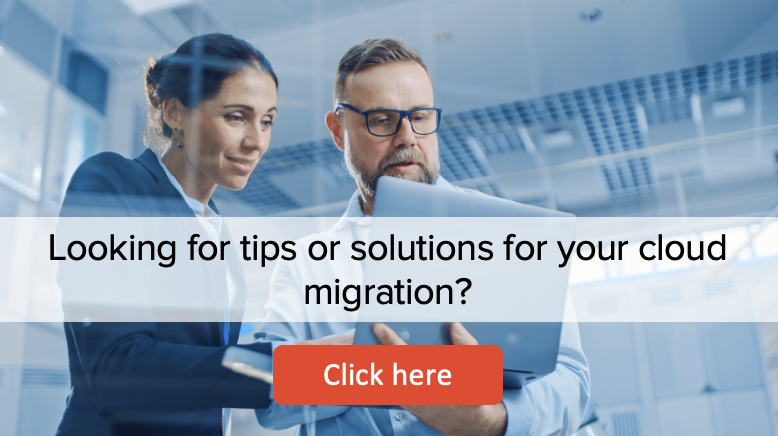In my last article, I outlined what hybrid IT is, and what benefits it can offer your organization. Let’s talk about what to consider when thinking about making the move to hybrid IT.
It can be daunting to try and wrap your head around transitioning your on-prem environment to a hybrid model. But don’t worry, I’ve outlined some key questions to ask yourself before you start on your hybrid IT journey.
1. What am I trying to do?
This seems like an easy one, but it’s helpful to have a thorough understanding at the onset of what your end goal will look like. And to understand the final product, you need to understand your current state. Start with a full analysis of your existing structure, service and workloads. Consider running a tool that assesses the apps and environments, to help inform your next steps. And then ask yourself, what am I trying to achieve?
2. What problems would the cloud solve for your customers?
This one’s a bit trickier, because you need to be mindful of what’s inside your environment while also looking at what your customers – in this case, internal customers from within your organization – need and want in the day-to-day. For example, does your organization have a high need for ad hoc apps and services, those which would previously fall into the shadow IT bucket? Does your organization need to be more responsive to market demand, thereby requiring agility in workflow allocation and management? Does your organization, like many, require assets procured via capital acquisitions versus ongoing monthly subscriptions? Answering these questions will help you pinpoint next steps.
3. What challenges do you currently have with your on-prem infrastructure?
Does scalability pose a problem for your organization? Many find that they are over-provisioned, meaning they over-estimate the resources they think they need, resulting in cost inefficiency and underuse of assets. Do you have a lot of administrative overhead with your current on-prem environment? If you’re limited to capital budgets it can be tricky to make the case for transitioning to the cloud where costs are often unknown. But with consumption-based cloud, you get a clear view of what you’re using. Like the heating bill that is higher in the winter months when it’s colder and lower in the summer months when it’s hotter, you’re able to see with full transparency the use versus the cost.

4. Are you looking to bolster the security of your environment?
As any IT professional can tell you, vendors are constantly issuing patches to address vulnerabilities in storage, server and network appliances. It can be hard to stay on top of them all, but not doing so could have catastrophic implications to your organization. But what if you could optimize cloud functionality by automating patching? Doing so would provide peace of mind and free-up valuable resources so you can focus on the applications and service to end users.
5. What does your business need (today and in the future)?
Many organizations find themselves in a reactive state with their IT infrastructure, always playing catch-up with patching, monitoring lifecycles for equipment, and determining existing versus future capacity. If your business requires scalability, agility, responsiveness, and speediness, it’s worth identifying what you need now and what you think you’ll need down the road. When you can eliminate the boundaries of the current state and blue-sky what your organization wants and needs, you can see with greater clarity what’s needed to facilitate the needs of today and equip your business to respond to the needs of tomorrow.
As you work to understand your current state and future needs, it’s important to keep in mind that you don’t need to do it all at once. In addition to a robust suite of customized tools and assessments that can help identify your current state, Compugen leverages the cloud adoption framework to help walk you through the process, identify business outcomes, define what you’re trying to achieve, analyze workloads and define where they should live, and then build the framework of the cloud infrastructure for migration, configuration, and ongoing management.
Unsure of how to proceed? Read my next article for a detailed breakdown of what you need to know before adopting hybrid IT.





.png)